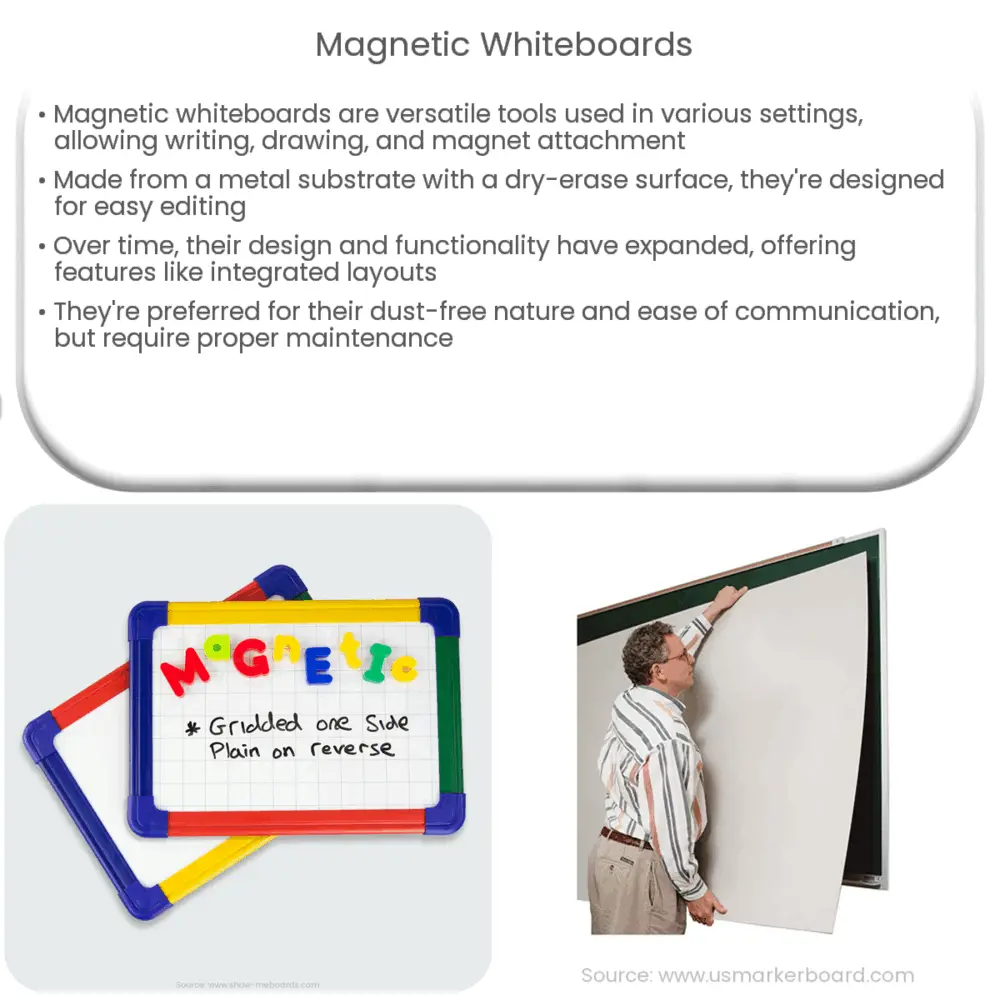Explore the versatile world of magnetic whiteboards, their advantages, disadvantages, maintenance, and various types in this comprehensive guide.

Understanding Magnetic Whiteboards
Magnetic whiteboards are indispensable tools used in a variety of settings, from classrooms and offices to homes and laboratories. They offer a practical platform for writing, drawing, and displaying magnetic objects.
The Fundamental Composition of Magnetic Whiteboards
At their core, magnetic whiteboards are typically made from a metal substrate covered with a porcelain or enamel surface. This surface is designed to be dry-erase, which means that non-permanent markers can be easily wiped away.
The Versatility of Magnetic Whiteboards
One of the key features that sets magnetic whiteboards apart from standard whiteboards is their ability to hold magnetic items. This gives users the flexibility to display notes, photographs, and even small objects on the board alongside their written content. It’s a practical feature that expands the usability of the board beyond just being a writing surface.
The Evolution of Magnetic Whiteboards
Over time, the design and functionality of magnetic whiteboards have evolved tremendously. Today, they come in various sizes and styles, from small personal boards for individual use to large wall-mounted boards for classroom or corporate use. Some boards now even include integrated grid lines, calendars, or other useful pre-printed layouts.
Advantages of Using Magnetic Whiteboards
The use of non-permanent markers allows for quick and easy editing, fostering dynamic discussions and brainstorming sessions.
Unlike traditional chalkboards, magnetic whiteboards are dust-free, ensuring a cleaner, healthier environment.
The magnetic properties enable easy attachment of relevant notes or visual aids, enhancing the communication process.
Disadvantages of Magnetic Whiteboards
High-quality magnetic whiteboards can be quite expensive compared to standard whiteboards or chalkboards.
Over time, marker residue can build up on the board’s surface, potentially leading to staining or ghosting.
Proper Maintenance of Magnetic Whiteboards
Like any other tool, magnetic whiteboards require proper care and maintenance to ensure their longevity. Regular cleaning with appropriate whiteboard cleaners, using only non-permanent markers, and avoiding abrasive cleaning tools are essential steps in maintaining the functionality and aesthetics of the board.
Types of Magnetic Whiteboards
There are different types of magnetic whiteboards, each designed to cater to specific needs. Here are some of them:
Mobile magnetic whiteboards: Designed with wheels for easy movement, these are ideal for flexible workspaces.
Wall-mounted magnetic whiteboards:


